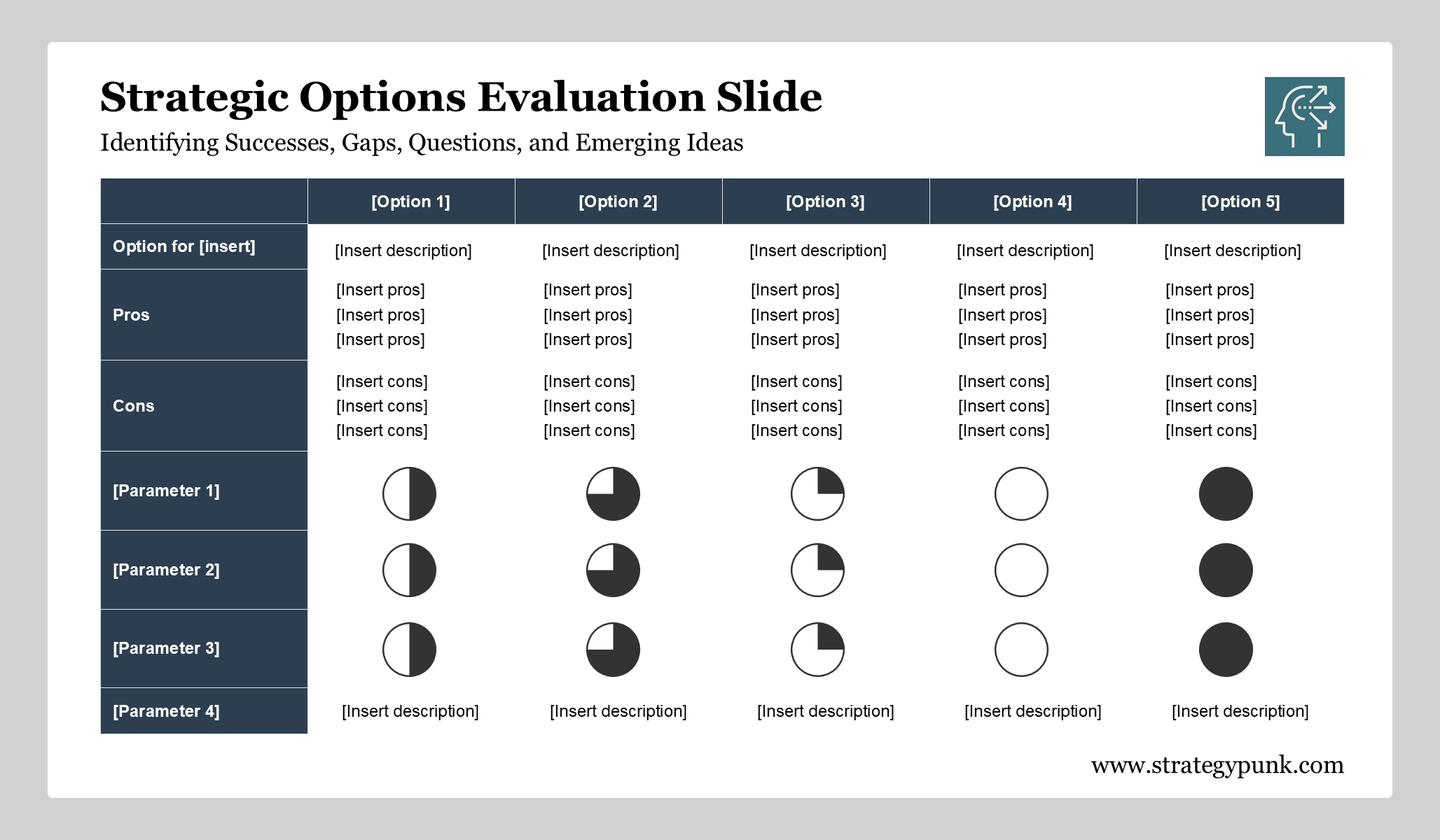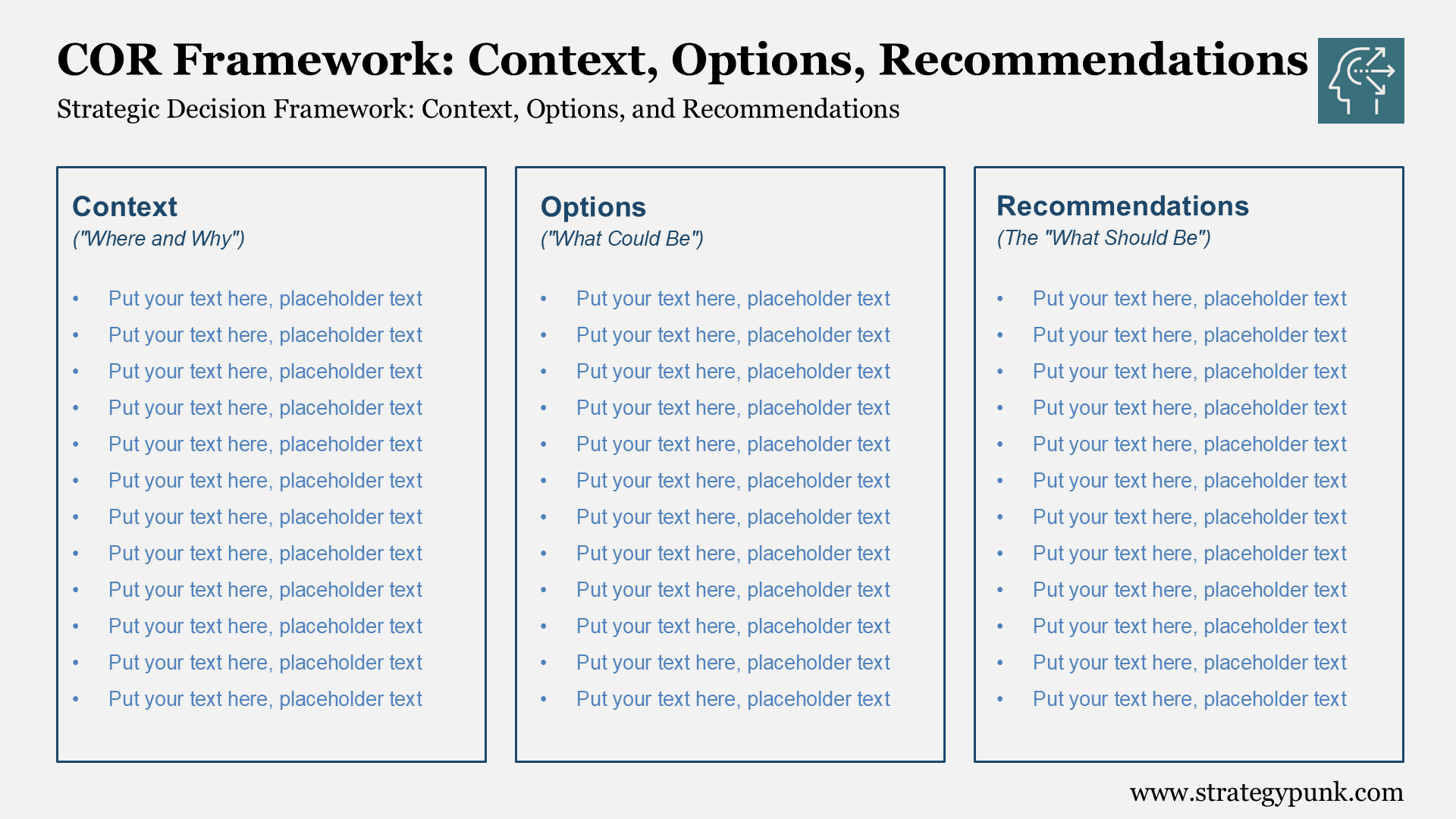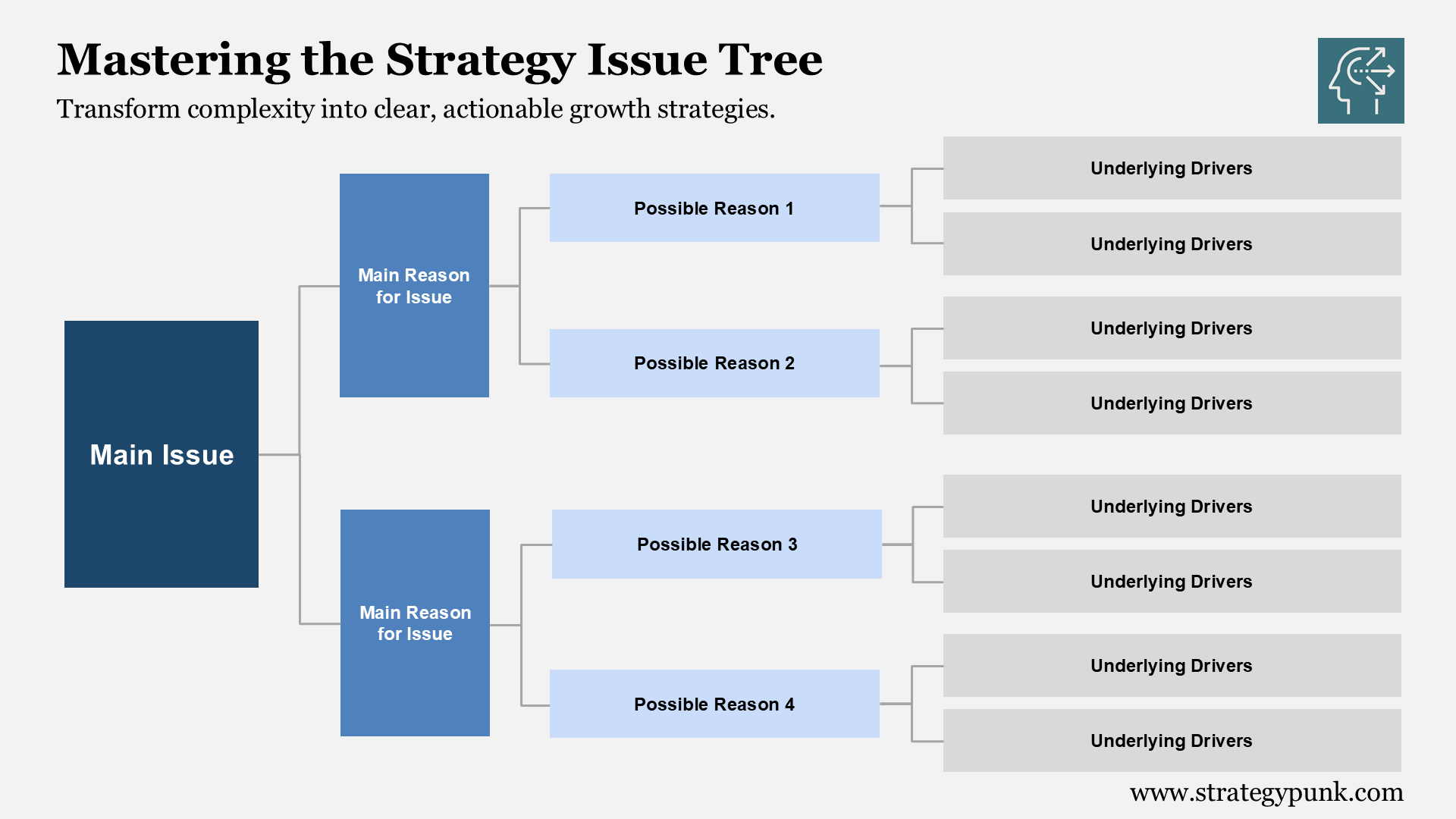7 Powers by Hamilton Helmer: A FREE Strategic Framework Template
7 Powers Hamilton Helmer: A FREE Strategic Framework Template. 7 Powers by Hamilton Helmer: Scale economics, Network Economics, Counter Positioning, Switching Costs, Branding, Cornered Resource, and Process Power.
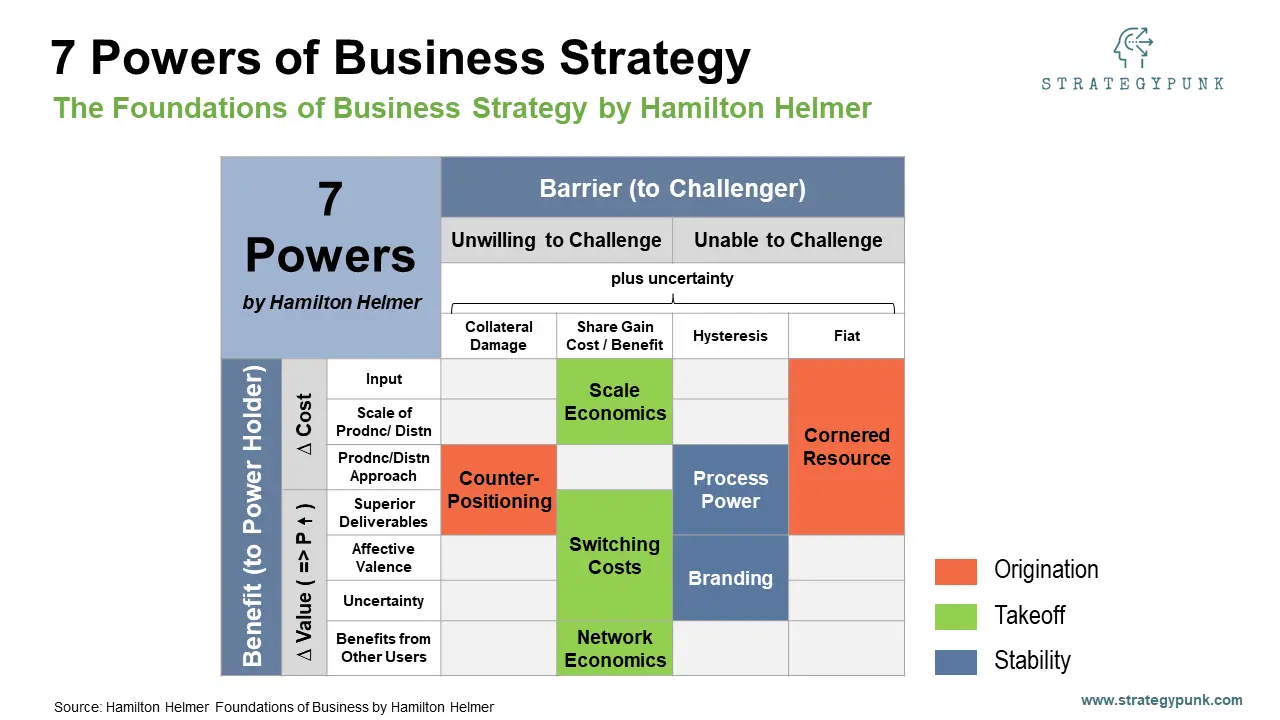
Do you want to become an unstoppable business strategist? Then, you must be familiar with Hamilton Helmer's 7 Powers Strategic Framework. Helmer describes seven strategies for generating differential and persistent returns in this strategic framework.
Introduction
When it comes to strategic positioning, most people think of standard competitive analysis tools like Porter's Five Forces, McKinsey's 3 Horizons Framework, etc. However, other ways to look at this can be just as powerful.
Every strategy, tactic, and operation must be optimized for performance and profitability when building a business. No matter how large or small your company, you’ll need to make wise decisions about how best to operate to gain a competitive edge and stay ahead of the market.
This article will provide insights on Helmer's 7 Powers that can help you build a stronger company. I'd like you to please read on to find out more about the 7 powers in business by Helmer.
When does market power matter?
By understanding how to use market power strategically, you can set up conditions that give you a lasting advantage over your competition.
Market power is a company's ability to influence another party's behavior by imposing costs or creating incentives for cooperation. Market power helps you understand how companies can take control of a market and use that control to their advantage, even if they don’t have a cost or quality advantage.
It can provide a durable competitive advantage. Market power confers a durable advantage by creating a continuous flow of benefits from one party to another. Because it involves a constant stream of help, a market power advantage can be sustained over long periods. In contrast, the other sources of competitive advantage are more likely to be disrupted or challenged by competitors.
Who are the seven powers by Hamilton Helmer?
The 7 powers by Hamilton Helmer are scale Economics, Network Economics, Counter Positioning, Switching Costs, Branding, Cornered Resource, and Process Power.
Power, the ability to realize long-term differential returns, is the key to economic growth and value creation.
Helmer's 7 Powers
An excellent start to understanding the drivers of competitive advantage is "7Powers" by Hamilton Helmer. Helmer outlines seven powers a company can develop to outperform and deliver consistent returns.
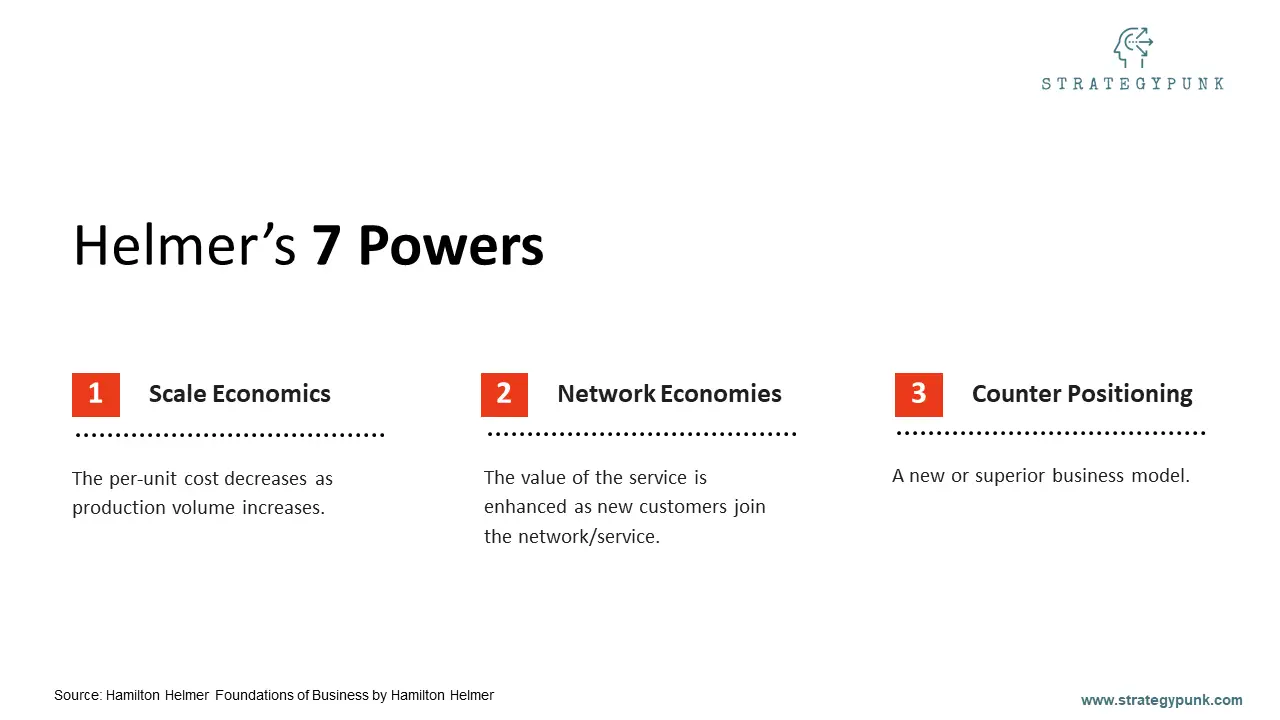
1. Scale Economies
The per-unit cost decreases as production volume increases.
2. Network Economies
The value of the service is enhanced as new customers join the network/service.
3. Counter Positioning
A new or superior business model.
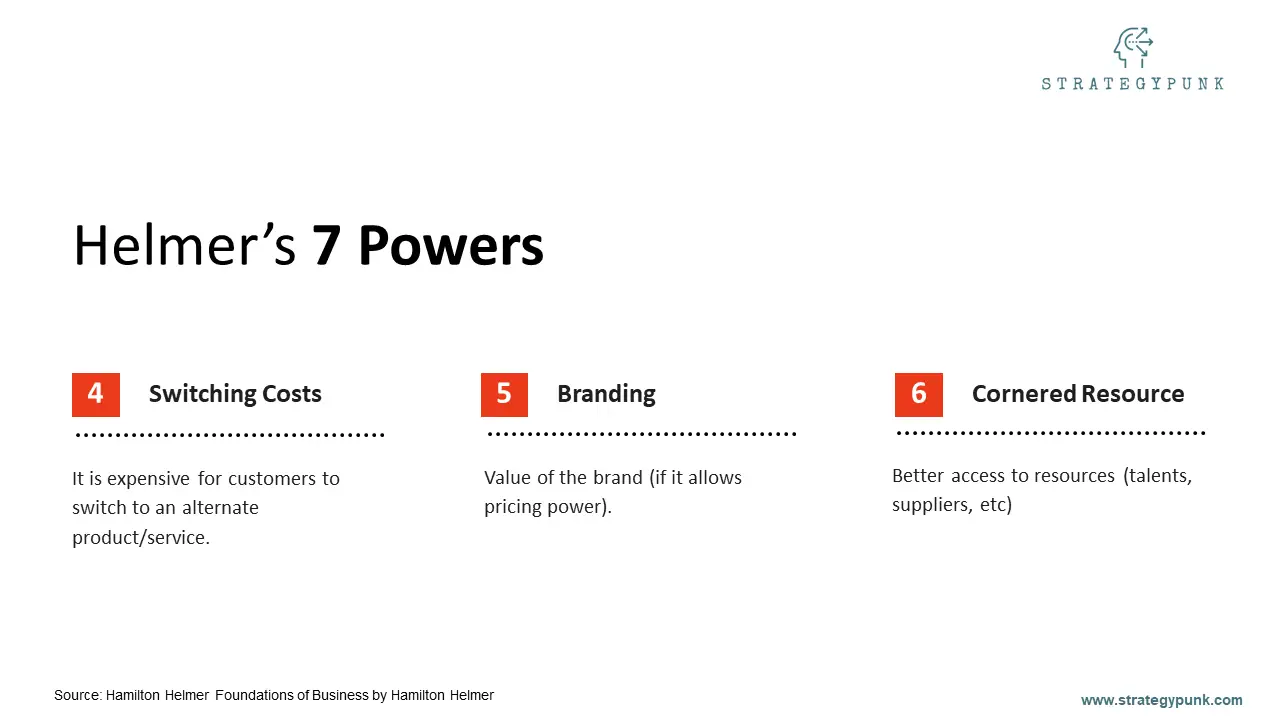
4. Switching Costs
It is expensive for customers to switch to an alternate product/service.
5. Branding
Value of the brand (if it allows pricing power).
6. Cornered Resource
Better access to resources (talents, suppliers, etc.)
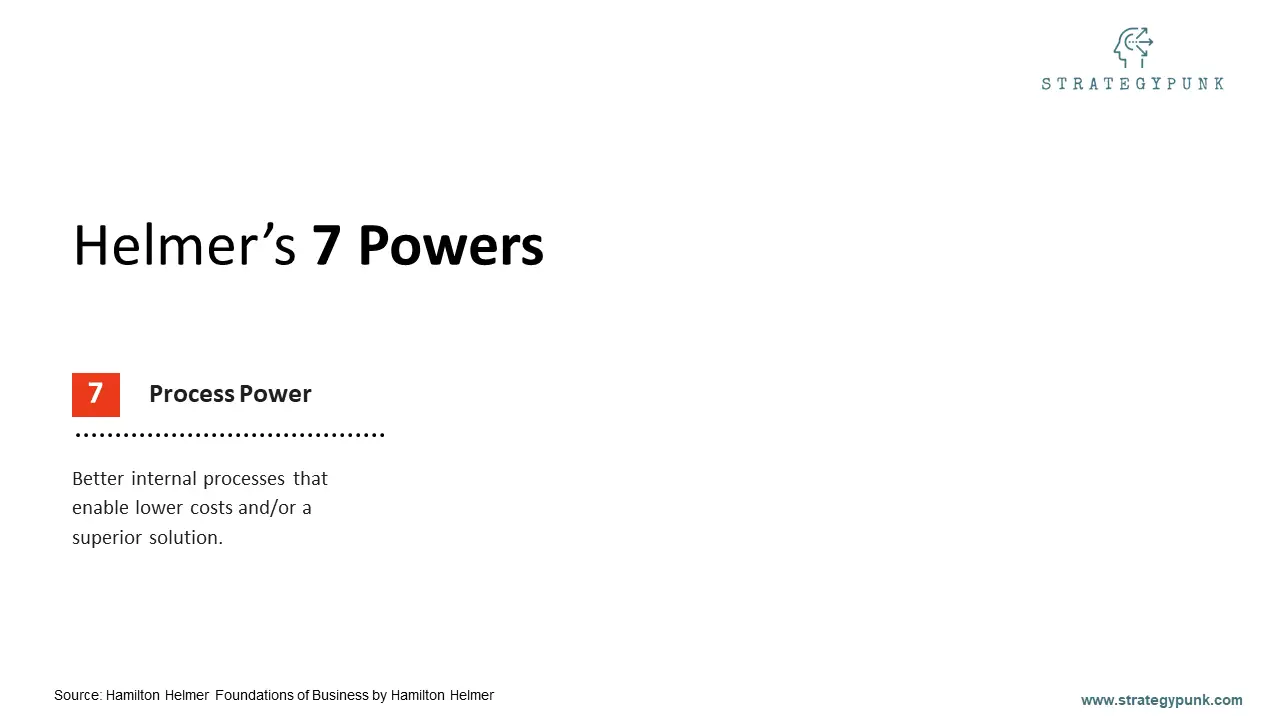
7. Process Power
Better internal processes that enable lower costs and a superior solution.
How to get to power? The Path To Power is Innovation

Every power type's primary cause is innovation. You must invent something new that generates significant economic value.
Innovation can be a product, solution, method, business strategy, or brand. It helps you grab a more significant portion of the market. How much is eventually determined by Helmer's 7 Powers?
The Power Progression
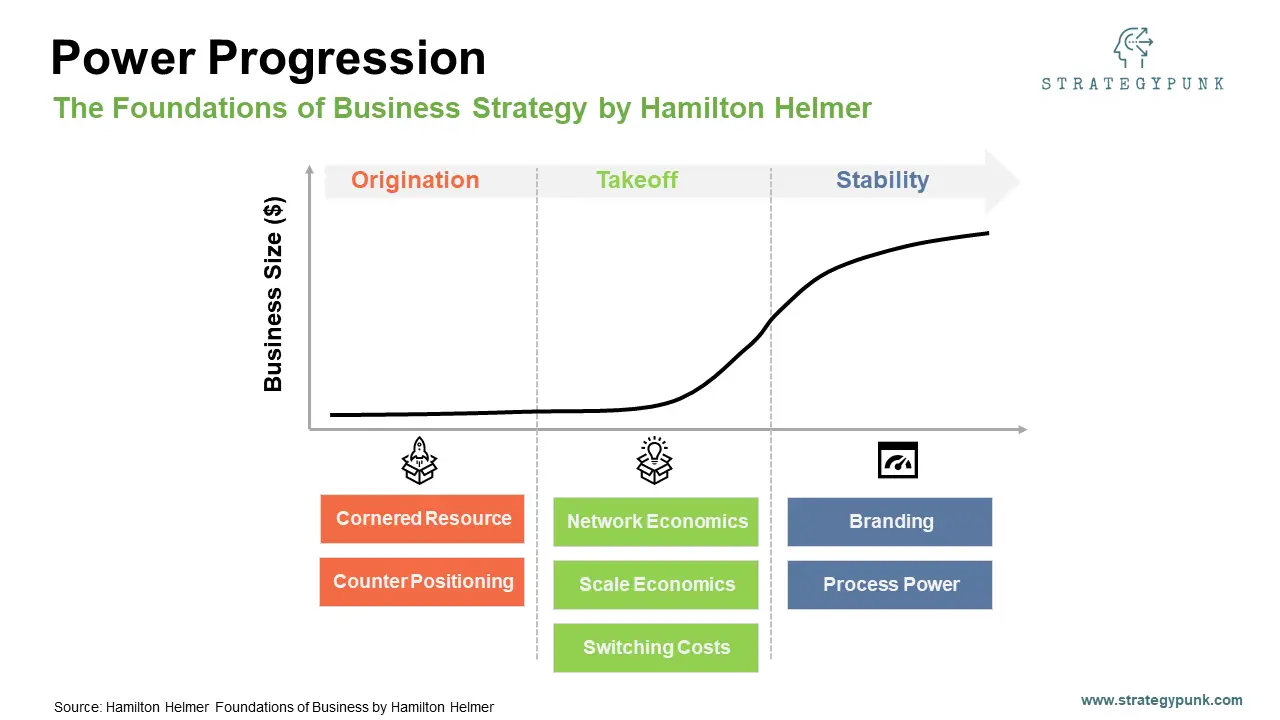
During the Origination period, you can seize two essential powers: Cornered Resource and Counter Positioning.
During the Takeoff period, you can seize three crucial economic benefits: Network economies, Scale economies, and Switching Costs. If you do not take these opportunities, they will be forever gone.
During the Origination period, you can seize two final powers: Branding and Process Power.
Product Market Fit vs. Power
Despite Helmer's 7 Powers (scaling, branding, switching costs, etc.), if you still need to achieve Product Market Fit (PMF), don't worry about them.
Product Market Fit is a distinct problem from power. Still, imagining what sort of power the company would have once it achieved Product Market Fit is a helpful exercise. It ensures you're creating something worthwhile.
Operational Power is not a source of power.
Power is not derived from operational excellence, and competitors may replicate it. Thus, it is a manageable barrier.
Hamilton Helmer 7 Powers Summary
By strategically understanding how to use Helmer's 7 powers, you can set up conditions that give you a lasting advantage over your competition.
Hamilton Helmer's 7 Powers are Scale Economics, Network Economics, Counterpositioning, Switching Costs, Branding, Cornered Resource, and Process Power.
Market power is a company's ability to influence another party's behavior by imposing costs or creating incentives for cooperation. Market power helps you understand how companies can take control of a market and use that control to their advantage. Hence, the sources of market power are essential to understand—conditions that create persistent differential returns.
Free 7 Powers Slide Deck / Template
Presentation in PowerPoint and Google Slides format (for subscribers)
Download the template. 100% editable. Subscribe for free. It's perfect for any business professional or student to download and edit.
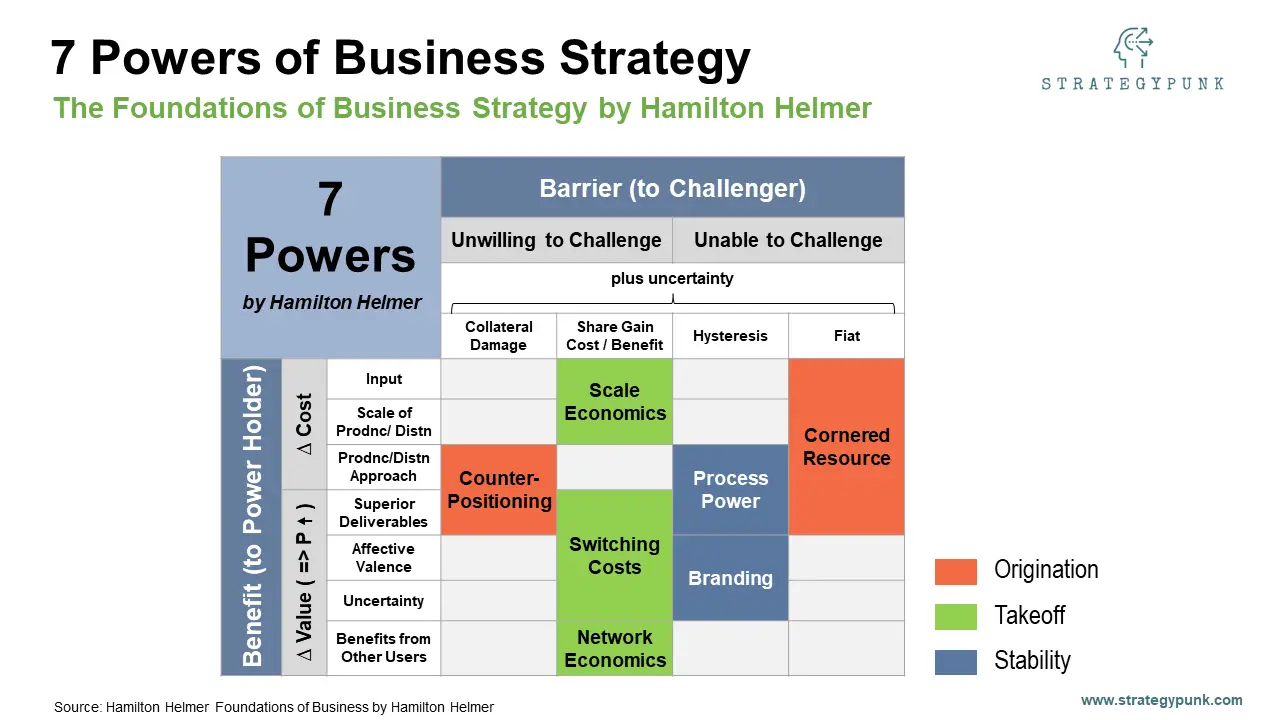
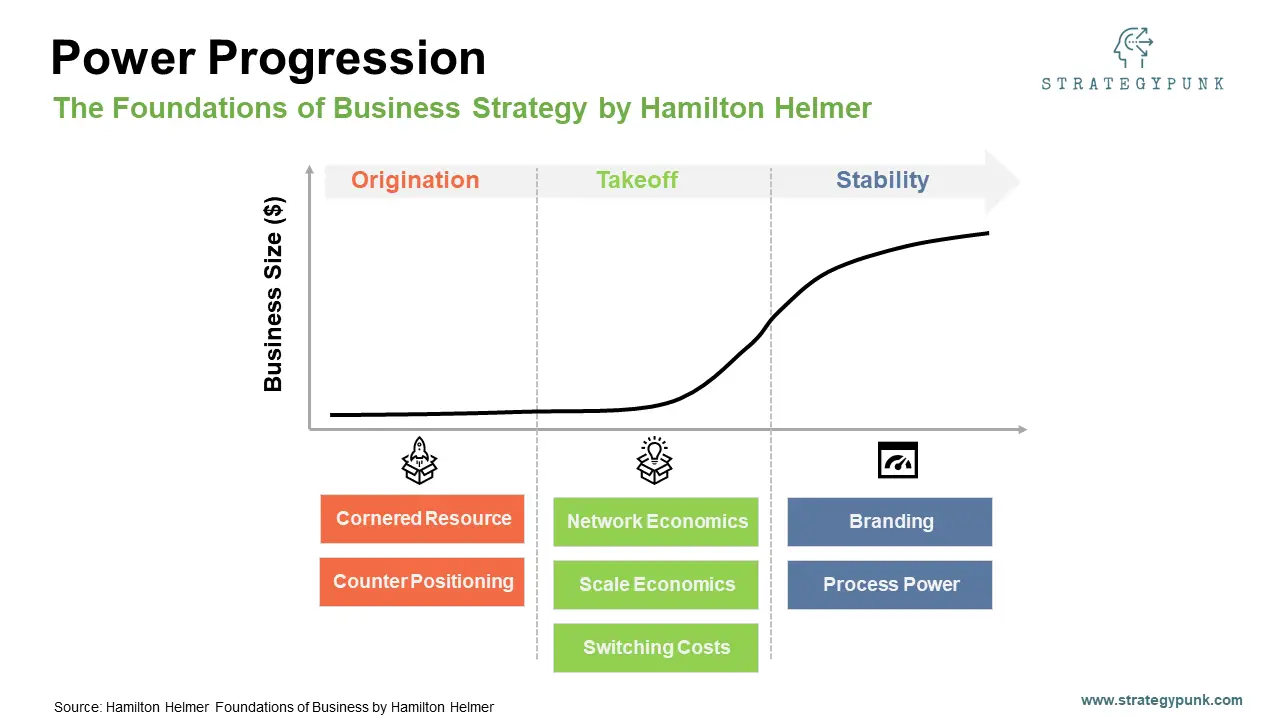
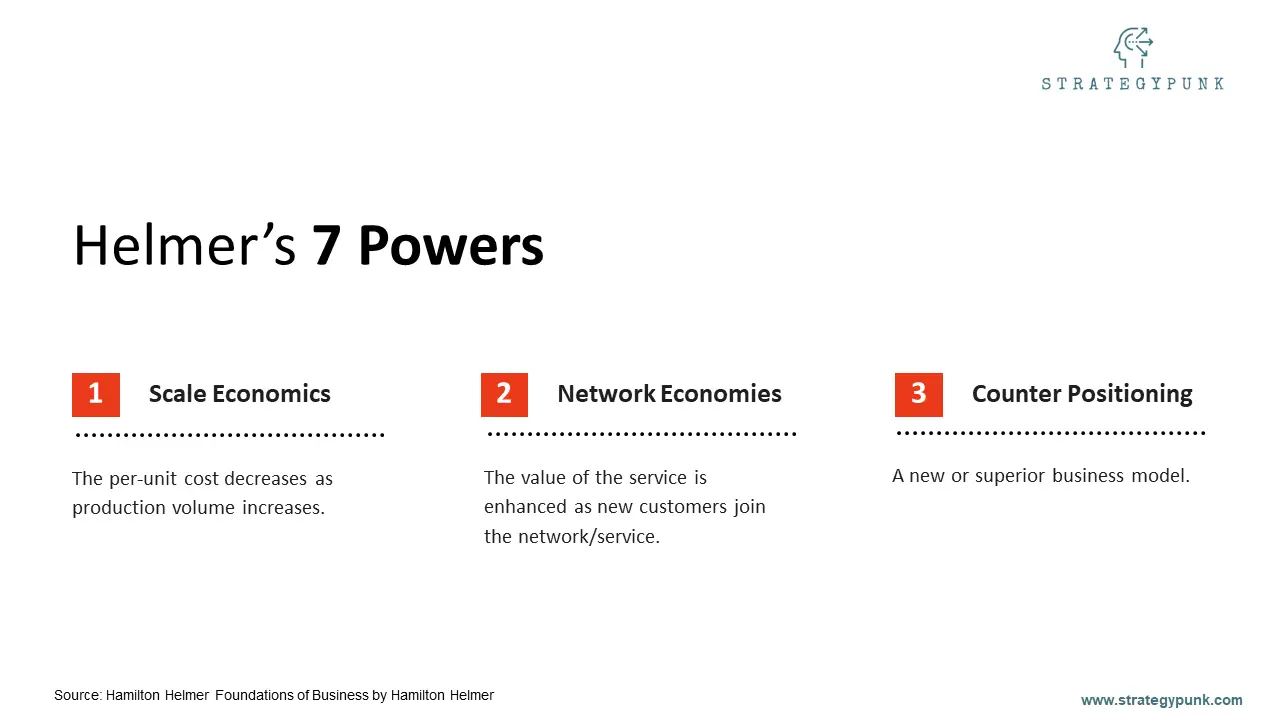
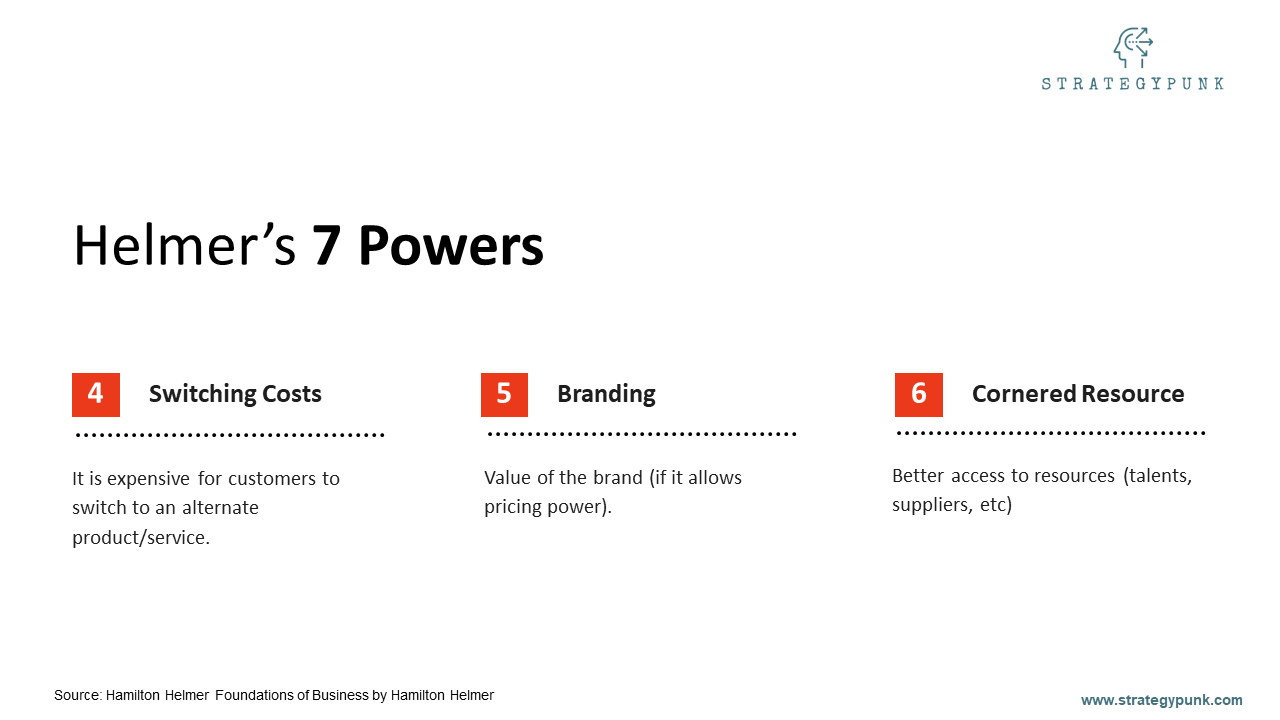
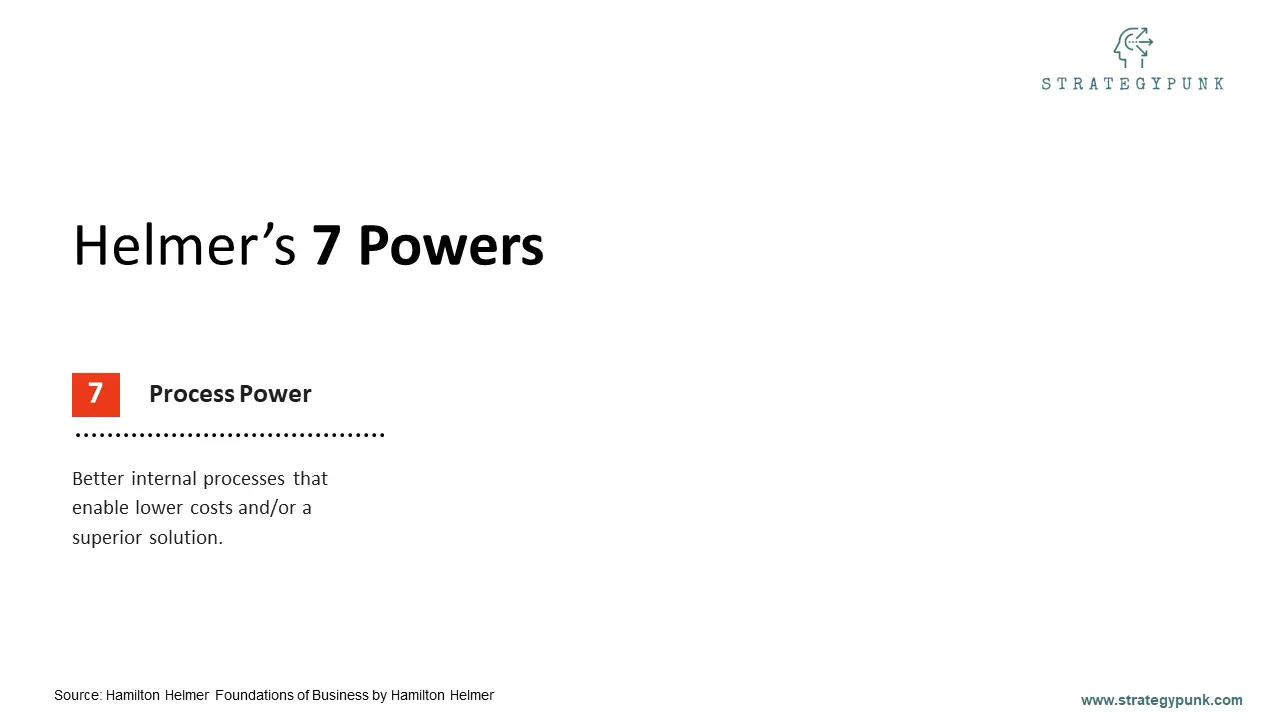
Hamilton Helmer 7 Powers Slide Deck


